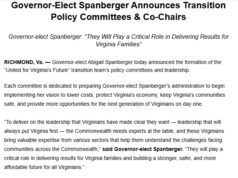( – promoted by lowkell)

In fact, it’s the thinking of utilities across the U.S., many of which are planning the same move. But ratepayers and regulators at Virginia’s State Corporation Commission should insist that Dominion take this opportunity to diversify its fuels. New natural gas generation should be at least evenly balanced with price-stable renewable energy like wind and solar. Here are three reasons why.
Natural gas prices will not stay low. Producers are currently pulling back on production because they can’t afford to lose money selling below their costs. And with utilities rushing to build new gas-fired electric generating plants, demand is set to soar in the coming years. Exports of liquid natural gas (LNG) will also serve new markets overseas, where gas prices are much higher than in the U.S., further pushing up demand here. Finally, with the price of oil about 10 times the current price of gas when measured per unit of energy, gas will increasingly displace oil in other uses such as powering heavy trucks and possibly conversion of gas to liquid fuels.
With all these factors pushing up demand, the price of natural gas has to go up, and the only question is how high. Longer term production will likely increase as well, dampening the price shocks, but natural gas prices have a long history of volatility, and there is no reason to think they will stabilize now.
Gas plants might outlive the boom. The Energy Information Agency says the U.S. has enough “technically recoverable” natural gas to last us 92 years at 2010 consumption levels, a figure it has revised so often, and by so much, that no one places much confidence in it. Assuming they have it right this time, 92 years at 2010 levels is not as reassuring as it sounds. Higher consumption rates as utilities replace coal with gas plants, coupled with a rise in exports of LNG into the international market, will cause that 92 year-supply figure to shrink dramatically. Supplying gas generating plants for their full 30-plus year lifespans might require us to pay much higher prices or to import LNG at whatever price the international market sets. (Indeed, LNG terminals conceived just a few years ago were built as import terminals.)
Recoverable gas supplies could also decrease dramatically if states or localities impose drilling bans or cutbacks due to concerns about drinking water contamination and air pollution associated with gas “fracking”; because of problems disposing of the contaminated wastewater; or due to an unwillingness in dry states to allocate the huge amounts of fresh water consumed in the fracking process.
Price stability doesn’t matter to utilities-but it does to consumers. Utilities pass through the cost of fuel directly to ratepayers, so price spikes have no effect on a utility’s bottom line. Dominion Virginia Power earns a high profit on the capital cost of a new generating plant, so its incentive is to build as much new generation as it can. From a profit standpoint, it is indifferent to fuel costs.
From a consumer’s perspective, however, fuel costs matter very much. We pay for both the construction of the new plant and for the cost of fuel for as long as the plant operates. For us, a new coal or gas plant is like a variable rate mortgage; we know what our monthly payment will be in the first year, but after that it is anybody’s guess. Worse, we’re locked in for 30 years with no ability to refinance or renegotiate. If you had a choice, would you agree to buy something for 30 years when you only know the price today?
As it happens, we do have a choice. Wind turbines and solar panels are like a fixed-rate mortgage. Once you’ve built the wind farm or installed the solar panels, the fuel is free. You know from the start exactly what you will be paying over the life of the project. People choose higher fixed-rate mortgages over variable rate mortgages for the same reasons we should favor renewable energy over new fossil fuel plants, even with the ultra-low teaser rate being offered for natural gas today.
Virginia’s State Corporation Commission has been reluctant to embrace renewable energy, feeling itself on solid ground only with the certainty of fossil fuels priced with time horizons of three years or less. This attitude has likely influenced Dominion to favor a natural-gas-only strategy over one that would hedge unsustainably low current gas prices with the long-term price stability of renewable energy. Yet a hedging strategy would be the more prudent one. Using the savings from cheap gas today to pay for equal amounts of renewable energy would give us lower electricity costs both now and for the next thirty years, compared to what we would have with natural gas alone.
There are many other reasons for Virginia to invest in renewable energy, from job creation to cleaner air and water, to getting in on the ground floor of innovative technologies. Dominion should not close off these options by filling all its new generation needs with natural gas plants that commit us for the next 30 years. Ratepayers should insist on a strategy that incorporates at least as much renewable energy as natural gas.
A version of this article originally appeared in the Virginian-Pilot on September 16, 2012.





![[UPDATED with Jim Ryan’s Letter] In Response to Youngkin’s “Sad, Whiny” Letter to Spanberger About UVA, VA Senate Majority Leader Surovell Says He’s “truly embarrassed for Gov Youngkin…After 4 yrs he has no understanding of basic VA govt structure”](https://bluevirginia.us/wp-content/uploads/2025/11/youngkinspanuva3-238x178.jpg)







![[UPDATED with Jim Ryan’s Letter] In Response to Youngkin’s “Sad, Whiny” Letter to Spanberger About UVA, VA Senate Majority Leader Surovell Says He’s “truly embarrassed for Gov Youngkin…After 4 yrs he has no understanding of basic VA govt structure”](https://bluevirginia.us/wp-content/uploads/2025/11/youngkinspanuva3-100x75.jpg)